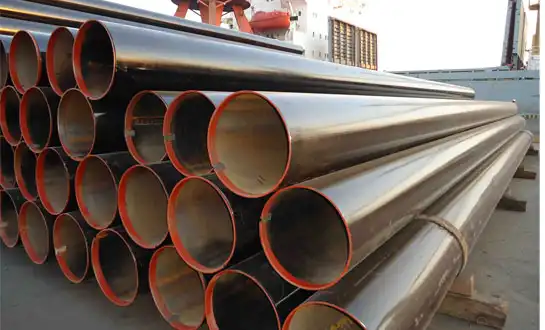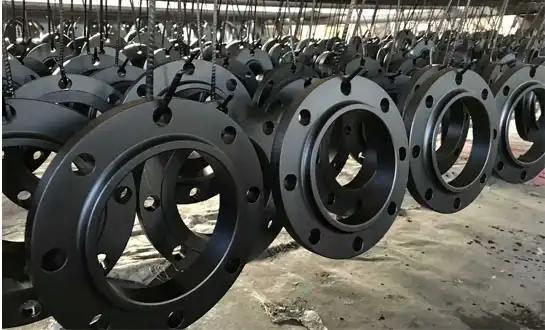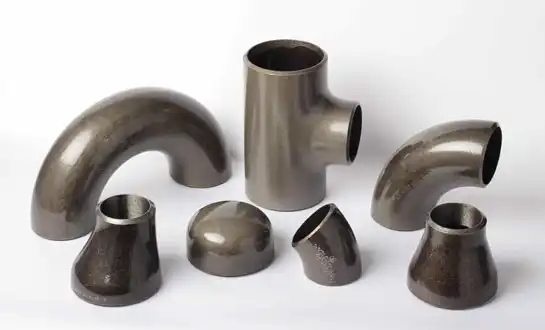How to Verify the Weldability of Duplex Steel Butt Weld Fittings?
Verifying the weldability of duplex steel pipe fittings represents a critical quality control measure, ensuring installed systems deliver expected performance throughout operational service. Duplex steel pipe fittings require comprehensive testing protocols distinct from conventional materials, involving specialized techniques and rigorous inspection standards. The verification process encompasses pre-welding assessment of material composition, in-process thermal monitoring, and post-welding examination using non-destructive testing. Engineers and procurement professionals must understand the complete verification framework for duplex steel pipe fittings to assess whether manufactured components meet specifications. This guide explores verification methods specific to duplex steel pipe fittings' weldability and provides practical frameworks enabling quality teams to establish robust protocols guaranteeing field reliability.
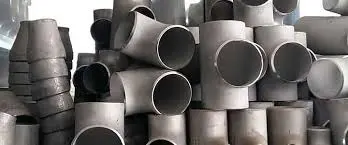
Pre-Welding Verification and Material Assessment
Chemical Composition Verification and Alloy Balance
Accurate verification of duplex steel pipe fittings' weldability begins with confirmed chemical composition within ASTM A815 specifications. The precise balance of chromium, molybdenum, nickel, and nitrogen in duplex steel pipe fittings determines phase formation during welding and ultimate corrosion resistance. Conduct spectroscopic analysis on each production batch using optical emission spectrometry, documenting exact composition values for traceability. Chromium and nickel equivalents calculations establish the ferrite-austenite balance critical for duplex steel pipe fittings weldability. Pitting resistance equivalent numbers ranging from 30 to 50 must remain within specification windows for duplex steel pipe fittings. Verify that nitrogen content remains precisely balanced; excessive nitrogen promotes austenite while insufficient nitrogen causes excess ferrite precipitation in duplex steel pipe fittings. Cross-verify mill certificates through independent testing when processing critical applications to eliminate material substitution risks, compromising duplex steel pipe fittings weldability.
Microstructural Evaluation and Phase Analysis
Metallographic examination reveals microstructural characteristics of duplex steel pipe fittings in as-received condition, providing baseline data for later weld comparison. Prepare polished cross-sections from representative duplex steel pipe fittings samples and examine under optical microscopy at 400X magnification to assess inclusion content and phase distribution. Ferrite percentage in duplex steel pipe fittings typically ranges from 40 to 60 percent; deviations indicate processing anomalies threatening weldability. Measure ferrite content quantitatively using ferritoscope instruments on duplex steel pipe fittings samples. Identify harmful phases, including sigma, chi, or carbide precipitation that might compromise duplex steel pipe fittings' performance. Establish baseline mechanical properties through testing before welding trials on duplex steel pipe fittings, enabling direct comparison of welded samples against virgin material properties.
Weld Procedure Qualification Testing
Develop comprehensive weld procedures specific to duplex steel pipe fittings by conducting qualification tests under actual production conditions. ASME Section IX and AWS D1.1 standards establish minimum requirements for duplex steel pipe fittings procedures, including tensile, bend, and hardness testing. Fabricate sample duplex steel pipe fittings assemblies using identical materials and techniques planned for production, subjecting specimens to destructive testing, and revealing internal weld quality. Conduct guided bend tests on duplex steel pipe fittings samples, examining for cracking after bending. Document all procedure parameters, including amperage ranges, preheat temperatures, and cooling protocols for duplex steel pipe fittings. Ensure duplex steel pipe fittings weld samples achieve parent material strength requirements. Maintain permanent records documenting qualification results for duplex steel pipe fittings procedures.
In-Process Monitoring and Thermal Parameter Verification
Real-Time Heat Input Control and Temperature Documentation
Continuous monitoring during duplex steel pipe fittings welding prevents deleterious phase formation, compromising long-term reliability. Record amperage, voltage, and travel speed for every pass on duplex steel pipe fittings, calculating kilojoules per millimeter within specified windows of 0.5 to 2.5 kJ/mm. Modern data acquisition enables automated recording during duplex steel pipe fittings fabrication, creating permanent documentation. Establish alarm thresholds for duplex steel pipe fittings parameters drifting outside acceptable ranges. Interpass temperatures must remain below 250 degrees Fahrenheit between passes on duplex steel pipe fittings. Document all temperature readings on traceability records for each duplex steel pipe fitting assembly, enabling forensic analysis if post-weld testing reveals unexpected results.
Gas Composition and Shielding System Verification
Proper shielding gas composition represents a critical verification parameter for duplex steel pipe fittings' weldability, influencing corrosion resistance and mechanical properties. Verify shielding gas purity before commencing duplex steel pipe fittings operations, testing for moisture and oxygen content. Establish protocols ensuring duplex steel pipe fittings utilize fresh gas cylinders with documented purity certifications. Nitrogen-enriched shielding gas containing 2 percent nitrogen maintains pitting resistance in duplex steel pipe fittings. Implement a backing gas application on the root side of duplex steel pipe fittings joints, eliminating atmospheric oxygen. Regular inspection of welding torches and nozzles ensures unobstructed gas delivery to duplex steel pipe fittings areas. Document gas composition results as part of permanent duplex steel pipe fittings traceability files.
Welder Performance and Qualification Surveillance
Continuous verification of welder performance ensures established procedures for duplex steel pipe fittings are consistently executed. Require welder recertification on duplex steel pipe fittings materials at minimum annual intervals per API 1104. Conduct practical qualification testing on duplex steel pipe fittings samples, verifying consistent technique. Implement routine surveillance during duplex steel pipe fittings production, confirming procedure compliance. Establish performance metrics for duplex steel pipe fittings welders, tracking defect rates and acceptance percentages. Maintain detailed personnel files documenting all duplex steel pipe fittings, welder qualifications, and performance history.
Post-Welding Verification and Non-Destructive Testing
Visual Inspection and Surface Discontinuity Detection
Comprehensive visual inspection provides the foundation for post-welding verification of duplex steel pipe fittings. Inspect finished duplex steel pipe fittings' welds within hours of completion. Document weld bead appearance and surface finish against acceptance criteria. Identify visible cracks or porosity on duplex steel pipe fittings requiring rejection. Perform dimensional verification on duplex steel pipe fittings, confirming assemblies meet specification geometry. Grinding on duplex steel pipe fittings must be followed by re-inspection.
Radiographic and Ultrasonic Examination Protocols
Radiographic testing provides permanent images of internal discontinuities in duplex steel pipe fittings. Conduct radiographic examination on representative duplex steel pipe fittings samples, exposing them to X-ray radiation. Radiographic results reveal internal porosity and incomplete penetration in duplex steel pipe fittings. Establish acceptance criteria aligned with ASME B31.3. Ultrasonic testing detects internal duplex steel pipe fittings flaws rapidly, measuring actual weld penetration depth. Maintain digitized records correlating ultrasonic findings with production parameters for duplex steel pipe fittings.
Mechanical Properties Testing and Corrosion Resistance
Tensile testing determines whether duplex steel pipe fittings weld joints achieve strength equal to the parent material. Extract tensile samples, including weld metal and heat-affected zones. Charpy impact testing evaluates duplex steel pipe fittings under shock loading at cryogenic temperatures. Hardness mapping identifies localized hardening in duplex steel pipe fittings heat-affected zones. Ferric chloride corrosion testing per ASTM G48 verifies that duplex steel pipe fittings maintain resistance after welding. Document all mechanical results as permanent duplex steel pipe fittings traceability records.
Conclusion
Comprehensive verification of duplex steel pipe fittings' weldability requires integration of composition analysis, microstructural evaluation, thermal monitoring, and rigorous post-weld testing. Systematic verification frameworks transform duplex steel pipe fittings into proven solutions delivering reliable performance across aggressive environments. At HEBEI RAYOUNG PIPELINE TECHNOLOGY CO., LTD., we recognize that excellent infrastructure begins with dependable materials and verified weldability. As leading pipes and fittings manufacturers, we supply high-quality duplex steel pipe fittings engineered to ASME B31.3, GOST-R, and ISO 9001:2015 standards.
FAQ
1. What chemical composition parameters determine duplex steel pipe fittings?
Chromium, molybdenum, nickel, and nitrogen content directly influence the phase balance critical for duplex steel pipe fittings' weldability. Pitting resistance equivalent numbers from composition establish whether duplex steel pipe fittings maintain corrosion resistance after welding. Optical emission spectroscopy verifies each batch meets specifications. Improper composition fundamentally compromises duplex steel pipe fittings weldability, making chemical verification essential.
2. Why is ferrite content measurement critical for duplex steel pipe fittings?
Ferrite content of 40 to 60 percent in duplex steel pipe fittings establishes phase balance, determining weldability and corrosion resistance. Excessive ferrite reduces toughness and promotes intermetallic formation during duplex steel pipe fittings welding. Insufficient ferrite compromises weldability characteristics. Ferritoscope instruments measure ferrite rapidly, enabling quick verification that duplex steel pipe fittings remain acceptable before welding operations commence.
3. What post-weld testing methods verify duplex steel pipe fittings?
Radiographic and ultrasonic testing reveal internal discontinuities, indicating the duplex steel pipe fittings' weld quality. Tensile and Charpy impact testing confirm that duplex steel pipe fittings' mechanical properties meet minimums. Corrosion testing per ASTM G48 verifies that duplex steel pipe fittings maintain environmental resistance. Collectively, these verify duplex steel pipe fittings assemblies perform reliably throughout service life.
4. How does heat input monitoring improve duplex steel pipe fittings verification?
Continuous documentation of amperage, voltage, and travel speed creates permanent records proving duplex steel pipe fittings process compliance. Heat input maintained between 0.5 and 2.5 kJ/mm prevents intermetallic formation, compromising duplex steel pipe fittings. Alarms enable preventive intervention before defects develop. Comprehensive monitoring ensures duplex steel pipe fittings fabrication achieves predictable performance.
HEBEI RAYOUNG PIPELINE: Your Premier Duplex Steel Pipe Fittings Manufacturers and Suppliers
Selecting a verified supplier for duplex steel pipe fittings directly determines whether infrastructure projects achieve superior reliability. HEBEI RAYOUNG PIPELINE TECHNOLOGY CO., LTD. stands as a dependable duplex steel pipe fittings manufacturer, delivering products to rigorous GOST-R, SGS, and ISO 9001:2015 standards across domestic and international markets. Our comprehensive verification protocols ensure every duplex steel pipe fitting component meets exacting requirements for mission-critical applications.
At HEBEI RAYOUNG PIPELINE TECHNOLOGY CO., LTD., we believe excellent infrastructure begins with dependable materials combined with verified manufacturing excellence. As leading pipes and fittings manufacturers, we supply high-quality duplex steel pipe fittings that stand the test of time through decades of service. Our expertise encompasses the complete duplex steel pipe fittings lifecycle from initial material selection through comprehensive weldability verification. We understand the paramount importance of consistent quality, ISO 9001:2015 compliance, and innovation in duplex steel pipe fittings applications.
Our diverse industrial pipe fittings include buttweld steel elbows, tees, reducers, and flanges, ensuring secure connections. Each duplex steel pipe fitting assembly benefits from advanced manufacturing, rigorous verification testing, and supply chain transparency, distinguishing RAYOUNG competitively. Whether managing water systems, gas lines, or critical chemical processes, our duplex steel pipe fittings deliver uncompromised performance and long-term durability. Experience why leading firms worldwide trust RAYOUNG for mission-critical duplex steel pipe fittings requiring verified weldability. Contact our technical team today to discuss your requirements and discover how our verified manufacturing transforms infrastructure vision into enduring reality. Reach out at info@hb-steel.com to explore customized duplex steel pipe fittings solutions backed by comprehensive weldability verification.
References
1. American Society of Mechanical Engineers. (2023). "ASME B31.3 Process Piping: Weldability Requirements for Duplex Stainless Steel Butt Weld Fittings." ASME Standards Publications, New York, NY.
2. American Welding Society. (2022). "AWS D1.1/D1.1M Structural Welding Code – Steel: Verification Procedures for Duplex Steel Pipe Fittings Weldability." Miami, FL.
3. ASTM International. (2023). "ASTM A815/A815M Standard Specification for Wrought Duplex Stainless Steel Piping Fittings: Weldability Testing and Verification Protocols." West Conshohocken, PA.
4. American Petroleum Institute. (2023). "API 1104 Standard for Welding Pipelines and Related Apparatus: Application to Duplex Steel Pipe Fittings Quality Assurance." Washington, DC.
5. Sandvik Materials Technology. (2023). "Duplex Stainless Steels: Comprehensive Weldability Verification Guide for Butt Weld Fittings and Joints." Technical Publication Series, Stockholm, Sweden.
6. International Organization for Standardization. (2023). "ISO 9001:2015 Quality Management Systems: Verification Standards for Duplex Steel Pipe Fittings Manufacturers and Weldability Testing." Geneva, Switzerland.

Need a quote? Want to see samples? Just say hello. We’re friendly. We’re fast. And we’re ready when you are.
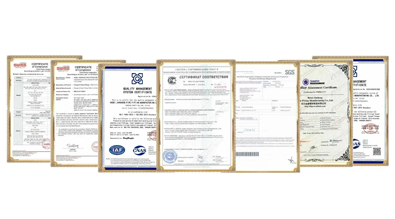
Welcome to RAYOUNG – Strong Pipes, Stronger Promise
